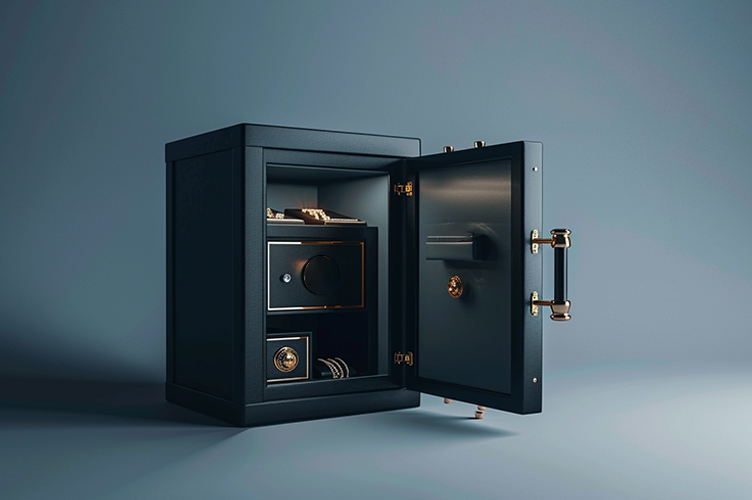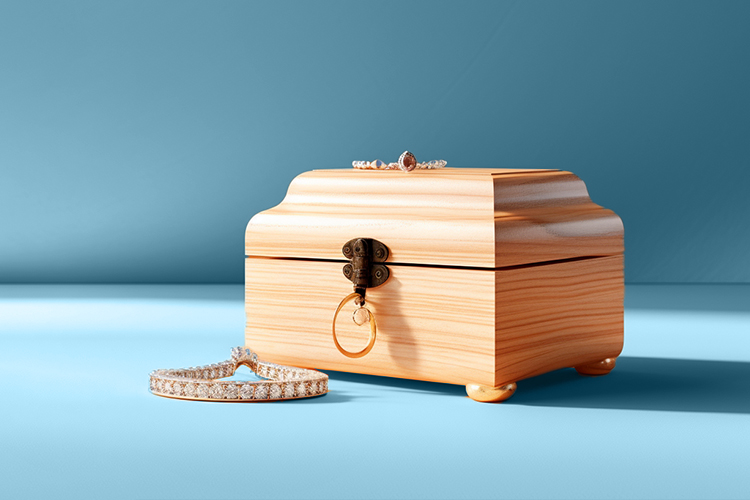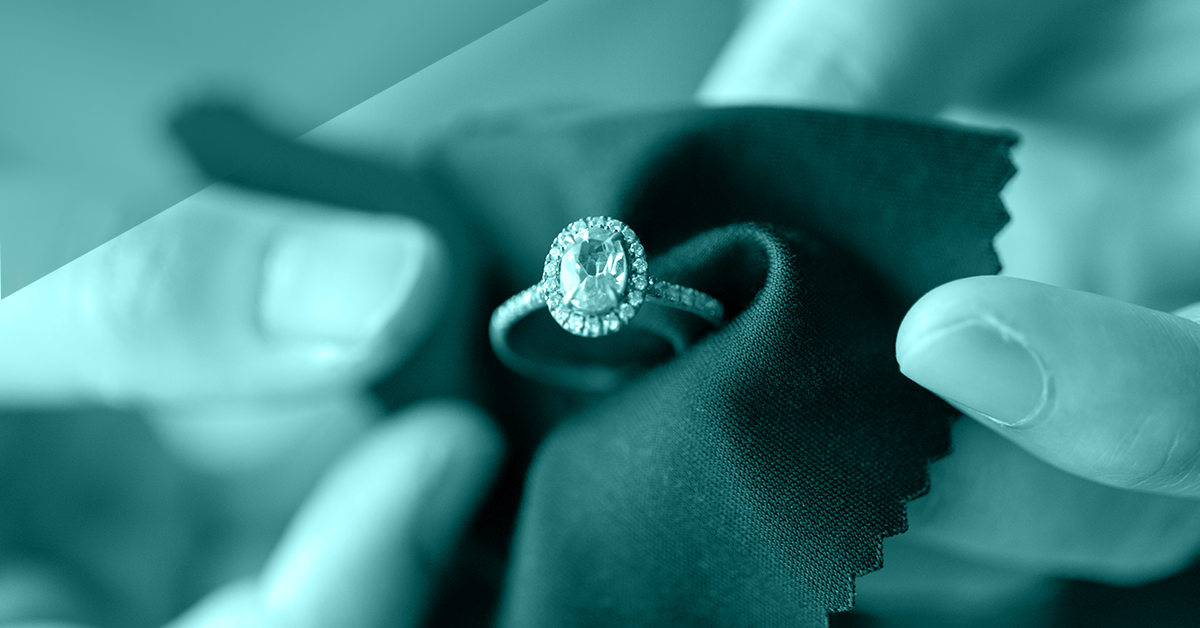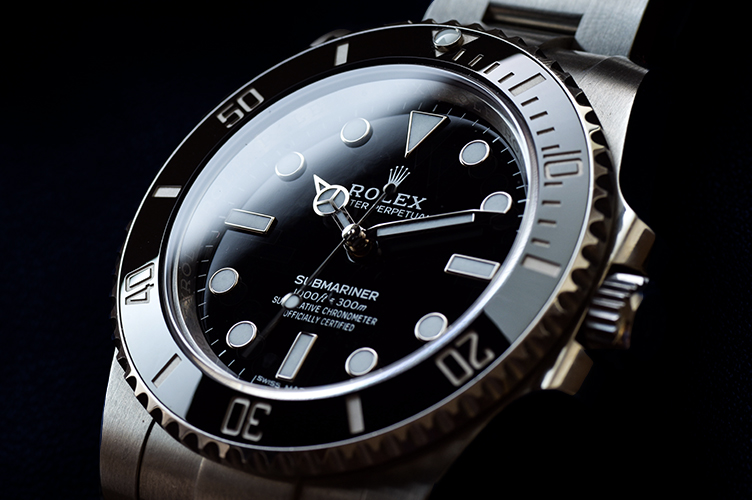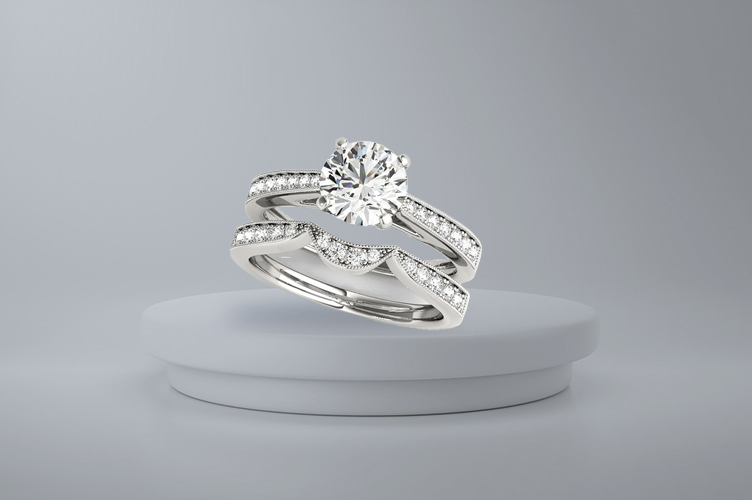Yellow gold has a timeless allure and is known as a metal that never tarnishes. But what about white gold? With its silvery hue and elegant luster, white gold is popular for everything from engagement rings to fine necklaces.
If you own fine jewelry like white gold rings, you wonder how well it holds up against the test of time and exposure to evehttps://brite.co/blog/white-gold-engagement-rings/ryday elements. Learn the answer to “Does white gold tarnish,” what factors contribute to tarnishing in fine jewelry, and how to protect your valuable pieces.
What You Will Learn
*We are jewelry experts and enthusiasts that love to share our favorite brands, tips, and tricks with you. If you choose to make a purchase through one of the links, we may earn a commission at no additional cost to you.
What is White Gold Made From?
White gold is not naturally occurring but results from mixing pure gold with other white metals to achieve its signature silvery sheen. Pure gold is naturally yellow, highly malleable, and not well-suited for jewelry that needs to withstand daily wear and tear.
Gold is combined with metals like palladium, silver, or zinc to enhance its strength and alter its color. 14K or 18K represents the blend of pure gold by karat value.
For instance, 18K white gold contains 75% gold and 25% alloy metals. Nickel was a common additive in the past. However, because it causes allergic reactions in some individuals, many jewelers now use other metals like palladium. Some common white gold alloys used in jewelry-making include:
| Karatage | Gold (Au) | Silver (Ag) | Zinc (Zn) | Palladium (Pd) |
| 9K | 37.5% | 62.5% | – | – |
| 10K | 41.7% | 47.4% | 0.9% | 10% |
| 14K | 58.3% | 32.2% | – | 9.5% |
| 18K | 75% | – | – | 25% (or Pt) |
White gold jewelry pieces may also undergo rhodium plating. Rhodium, a member of the platinum family, is applied as a thin coating to white gold to amplify its shine and provide a protective barrier against scratches and tarnishing.
Over time, rhodium-plated white gold jewelry can experience wear and tear, removing some of the coating. You can have the rhodium re-applied to restore the jewelry’s original brilliance–this melding of metals and the addition of rhodium plating grant white gold its unique combination of beauty and resilience.
We Can’t Get Enough White Gold Jewelry. Check Out Our Top Picks To Add To Your Collection:

This open wrap ring really sparkles
Shop today at Jean Dousset

We love a ruby fashion ring in 14k white gold right now
Get yours at Grown Brilliance
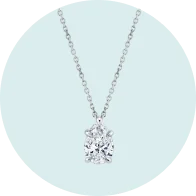
The perfect pear pendant for any occasion
Find it at Jean Dousset for only $1,800

All diamonds all over this 14K white gold band with a beautiful center stone
Pick your perfect version at Rare Carat
What is Tarnish?
Because many white gold jewelry pieces contain silver, you may wonder, “Does white gold tarnish like silver?” Learning what tarnish is can help you understand why white gold jewelry is resistant to tarnishing
Tarnish is a thin layer of corrosion that forms on the surface of metals, like silver, copper, and brass, when they react with elements in their environment. However, tarnishing is not a breakdown of the metal. It only occurs on the surface, resulting in a dull or discolored appearance.
Tarnishing is an oxidation-reduction (redox) reaction. In this process, the metal loses electrons. It reacts with oxidizing agents in the atmosphere, such as oxygen or sulfur compounds. For example, when silver tarnishes, it reacts with hydrogen sulfide (H₂S) in the air, forming a layer of silver sulfide (Ag₂S) on its surface. This layer is usually dark, so tarnished silver loses its lustrous shine.
Factors That Can Contribute to Tarnish
While tarnishing is a natural process for many metals, certain factors can accelerate this phenomenon, particularly in jewelry, including:
- Humidity and moisture: Moisture can speed up the oxidation process, causing your jewelry to tarnish more quickly.
- Chemical exposure: Household chemicals, perfumes, and even lotions contribute to tarnishing. These substances contain sulfates that react with the metal, leading to the formation of tarnish.
- Body oil and sweat: Acids and oils naturally secreted by your skin can react with the metals in your jewelry, especially during physical activity.
- Air pollution: Sulfur compounds in the air, commonly found in polluted environments, cause accelerated tarnishing, especially in silver and copper-based jewelry.
- Improper storage: Keeping your jewelry tangled together or exposed to air and light can lead to quicker tarnishing. Airtight storage and separating different types of metals can slow down the process.
Can White Gold Tarnish?
The short answer is no–white gold does not tarnish. White gold alloys are a combination of metals naturally resistant to tarnish due to their low chemical reactivity. These metals are also generally resistant to the kinds of redox reactions that lead to tarnish. Gold’s chemical stability makes it less likely to lose electrons and participate in these reactions.
Rhodium plating further increases white gold’s resistance to tarnish. Rhodium is a highly durable and inert metal, so it doesn’t easily undergo chemical reactions that cause tarnish. When applied as a coating to white gold, it acts as an additional barrier to environmental factors.
However, because white gold rhodium-plated jewelry can wear down over time, it may reveal the natural white gold color underneath. While this may appear similar to tarnishing, it’s a different process: it’s the wearing away of a protective layer rather than a chemical alteration of the metal. White gold may need periodic re-plating to maintain its original luster.
How to Care For White Gold Jewelry
Taking good care of your white gold jewelry can ensure its sparkle and elegance endure for years. While white gold is relatively low-maintenance compared to some other metals, it still benefits from regular cleaning and mindful handling.
Some easy ways to keep your white and gold items looking just as brilliant as the day you got them include:
- Frequent cleaning: Use mild detergent and warm water to clean your white gold pieces gently. A soft-bristled toothbrush can remove accumulated dirt. Rinse thoroughly and pat dry.
- Avoid chemical exposure: Keep your jewelry away from household cleaning agents, chlorine pools, and personal care products like perfume and lotion, as these can accelerate the wear of the rhodium plating.
- Proper storage: Store your white gold jewelry in a cool, dry place, ideally in individual soft pouches to prevent scratching. Keeping them in an airtight container can also minimize exposure to air and moisture.
- Regular check-ups: Particularly for pieces with gemstones like white gold wedding rings and engagement rings, periodic professional check-ups can ensure that the settings are secure and stones are not loose.
Protect Your White Gold Jewelry With BriteCo
Protecting your treasured white gold jewelry has never been more straightforward or affordable, thanks to BriteCo. In as little as two minutes, you can secure worldwide insurance coverage right from your smartphone.
Our services offer impressive coverage options, including loss, theft, damage, and even mysterious disappearance. Plus, with zero deductibles, you won’t face any out-of-pocket expenses when you make a claim. Our prompt claims replacement process and commitment to providing up to 125% of the appraised value for your fine jewelry sets us apart. You’ll also have the flexibility to choose between convenient monthly or annual payments.
With BriteCo, you’re not just buying insurance but investing in a promise of fast, affordable, and comprehensive protection for your fine jewelry. Use our online tool to get a quote, or contact us for more information.
FAQs
How often should I get my white gold jewelry re-plated?
Generally, frequently worn rings like white gold wedding bands may require re-plating every three months to a year due to constant wear, while less frequently worn items like necklaces or earrings might only need it every one to two years.
Is white gold hypoallergenic?
White gold can be hypoallergenic, depending on the metals used in the alloy. If it contains nickel, it may trigger allergies. However, white gold alloys that use palladium are generally hypoallergenic. Rose gold, another popular choice, is usually not hypoallergenic due to its copper content.
Suggested Read: What Metal Is Hypoallergenic? | BriteCo Jewelry Insurance
Can white gold turn yellow over time?
Yes, white gold can appear slightly yellow over time as the rhodium plating wears off, revealing the natural gold alloy underneath. This yellowing is not tarnishing but the wearing away of the protective rhodium layer.
Does the karat weight of white gold affect its likelihood to tarnish?
The karat weight of white gold does not increase the probability that your piece will tarnish, as gold is resistant to tarnish. However, lower karat white gold may contain a higher proportion of metals less resistant to tarnish, like silver and nickel, slightly affecting its overall durability.
Is white gold safe to wear in pools or the ocean?
It’s generally not advisable to wear white gold in pools or the ocean. Chlorine in pools and salt in seawater can accelerate the wear of the rhodium plating, diminishing its luster.
Also Check:
What is Rhodium Jewelry? | BriteCo Jewelry Insurance
What is Gold Vermeil Jewelry? | BriteCo Jewelry Insurance
Unveiling the Truth: How to Tell if Gold is Real Using a Lighter
Does Clear Nail Polish Keep Jewelry From Tarnishing?
What Jewelry Does Not Tarnish? | BriteCo Jewelry Insurance







